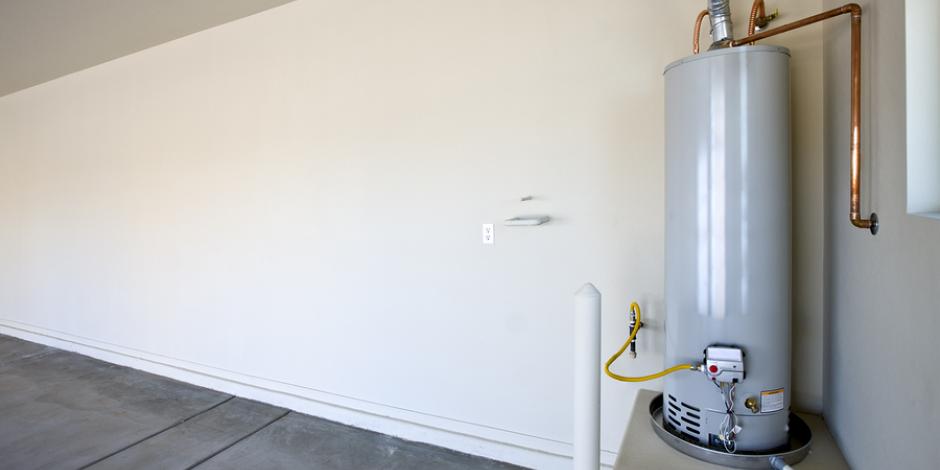Professional Advice for Caring for Your Home's Hot Water SystemImportant Advice on Caring for Your Home's Hot Water System
Professional Advice for Caring for Your Home's Hot Water SystemImportant Advice on Caring for Your Home's Hot Water System
Blog Article
Are you currently in search of additional info around What Kind of Maintenance Do Water Heaters Need??

Warm water is vital for daily comfort, whether it's for a refreshing shower or washing meals. To ensure your warm water system runs effectively and lasts longer, routine maintenance is key. This post provides useful tips and understandings on how to preserve your home's hot water system to avoid disturbances and expensive repair work.
Intro
Maintaining your home's warm water system could seem difficult, but with a couple of easy steps, you can guarantee it operates efficiently for many years to come. This overview covers whatever from recognizing your hot water system to do it yourself maintenance suggestions and recognizing when to employ professional assistance.
Value of Keeping Your Hot Water System
Regular upkeep not only prolongs the lifespan of your warm water system but additionally ensures it runs efficiently. Disregarding maintenance can bring about reduced efficiency, greater energy expenses, and also premature failing of the system.
Indications Your Warm Water System Needs Upkeep
Knowing when your warm water system requires interest can protect against significant problems. Keep an eye out for indicators such as irregular water temperature, unusual sounds from the heater, or corroded water.
Understanding Your Warm Water System
Before diving into upkeep jobs, it's valuable to recognize the fundamental parts of your hot water system. Usually, this consists of the hot water heater itself, pipelines, anode rods, and temperature level controls.
Monthly Maintenance Tasks
Normal monthly checks can assist capture small issues before they intensify.
Flushing the Hot Water Heater
Flushing your hot water heater gets rid of sediment build-up, improving effectiveness and lengthening its life.
Checking and Replacing Anode Rods
Anode rods avoid deterioration inside the container. Inspecting and replacing them when worn out is important.
Checking and Readjusting Temperature Level Settings
Adjusting the temperature settings makes sure optimum efficiency and safety.
DIY Tips for Upkeep
You can execute several upkeep jobs on your own to maintain your warm water system in leading problem.
Checking for Leaks
Regularly examine pipes and connections for leaks, as these can result in water damage and greater bills.
Testing Pressure Relief Valves
Evaluating the pressure relief valve ensures it functions correctly and avoids extreme stress build-up.
Protecting Pipelines
Protecting warm water pipelines decreases warm loss and can conserve power.
When to Call a Specialist
While DIY maintenance is useful, some concerns call for professional knowledge.
Complicated Concerns Needing Expert Help
Examples include significant leakages, electric troubles, or if your hot water heater is consistently underperforming.
Routine Professional Maintenance Benefits
Professional upkeep can consist of detailed examinations, tune-ups, and guaranteeing compliance with safety and security requirements.
Final thought
Regular upkeep of your home's warm water system is important for effectiveness, durability, and expense savings. By adhering to these pointers and knowing when to look for expert help, you can ensure a trustworthy supply of hot water without unexpected disturbances.
Water Heater Maintenance Tips
Test the TPR Valve
Shut off the power and the cold-water supply valve. Place a bucket under the pipe connected to the temperature-pressure-release (TPR) valve on the top or side of the tank. (This valve opens if the tank pressure gets too high.) Lift the valve’s tab to let some water out, then let go. If water keeps flowing, drain the tank partway, unscrew the old valve with a pipe wrench, and install a new one. Check the Anode Rod
Put a hose to the tank’s drain cock and let out a few gallons of water. Now fit a 1 1/16-inch socket onto the rod’s hex head on top of the heater (or under its top plate) and unscrew the rod. If it’s less than ½ inch thick or coated with calcium, buy a new one, wrap its threads with Teflon tape, put it back in the tank, and tighten securely. Use this segmented rod if headroom above the tank is limited. Drain the Tank and Wash Out Sediment
Drain the remaining water in the tank into the bucket, then stir up the sediment on the tank’s bottom by briefly opening the cold-water supply valve. Drain and repeat until clean water comes out of the hose. Close the drain cock, refill the tank, and turn its power back on. Adjust the Temperature
Find the temperature dial on the side of the tank and unscrew its cover. Adjust the dial to 120 degrees using a flathead screwdriver. For every 10 degrees the temperature is lowered, you can expect to save up to 5 percent in energy costs. Turn the water heater off or the thermostat down to its lowest setting if you plan to be away from home for more than three days. Insulate the Pipes
Buy some self-sticking 3/8-inch-thick foam pipe insulation that matches the pipes’ diameter. Slide the foam over the hot-and cold-water pipes as far as you can reach. Insulating the cold-water pipe prevents condensation in summer. Peel the tape and squeeze the insulation closed. If the pipe is 6 inches or less from the flue, cover it with 1-inch-thick unfaced fiberglass pipe wrap. https://www.thisoldhouse.com/plumbing/21016402/how-to-maintain-a-water-heater

As a serious reader on Tips For Maintaining Your Hot Water Heater, I was thinking sharing that excerpt was worth the trouble. Sharing is good. You won't know, you could be helping someone out. Thanks a bunch for being here. Please come visit our blog back soon.
Click Here To Find Out More Report this page